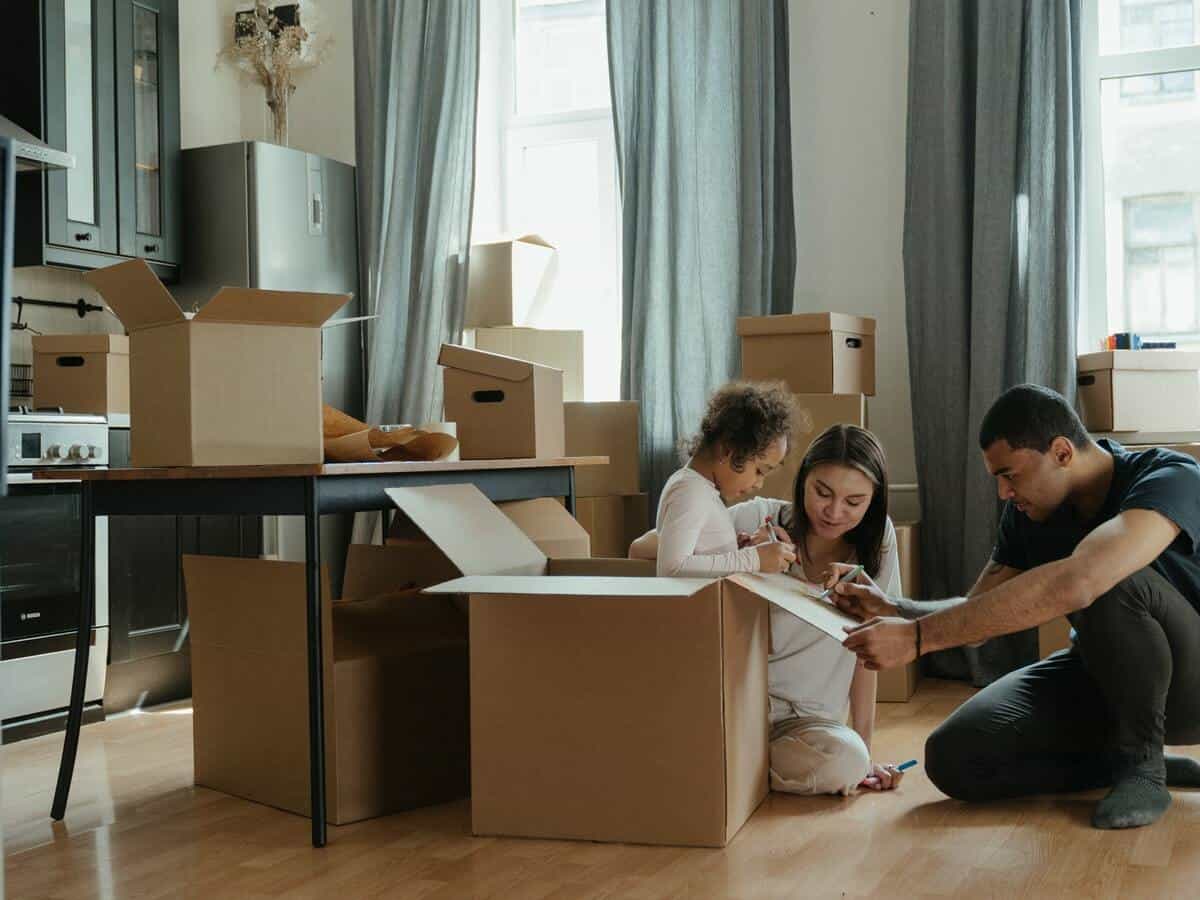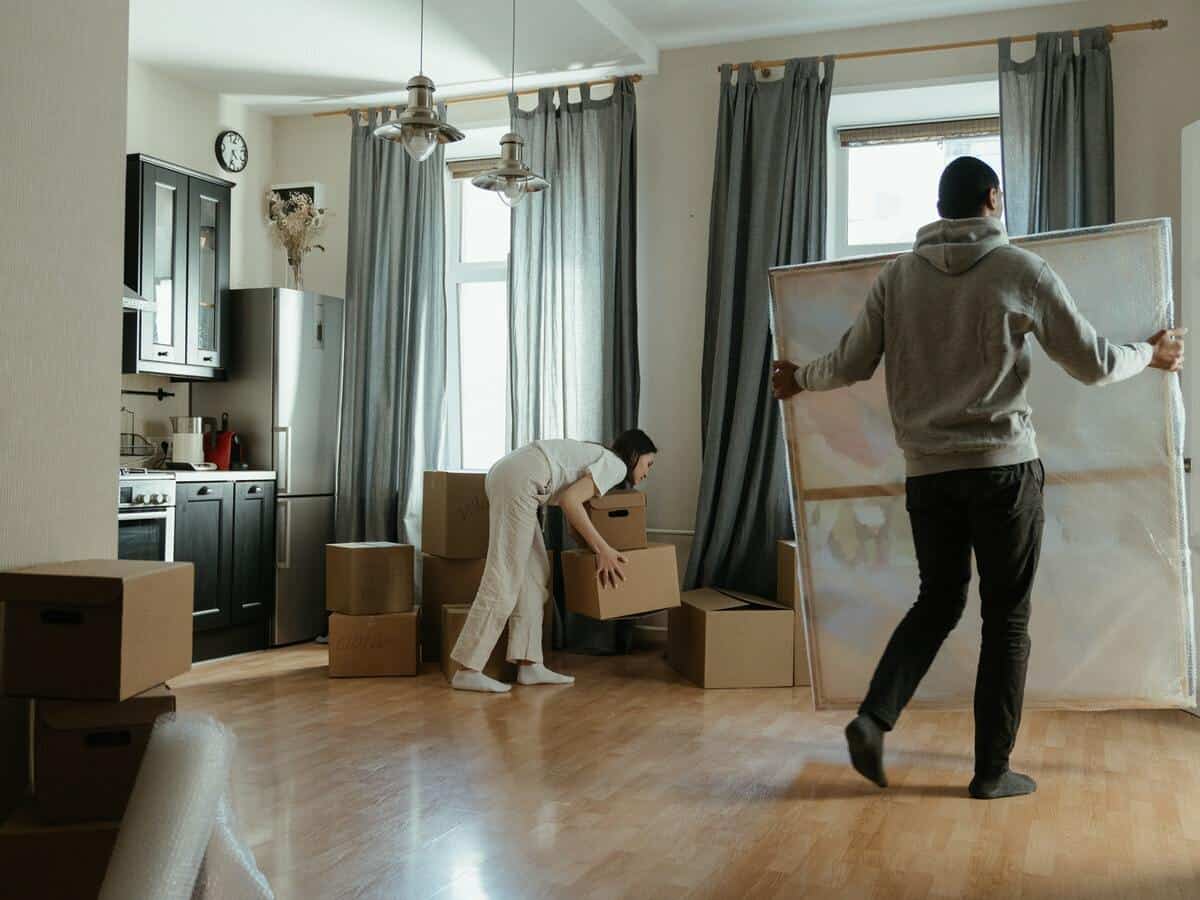Moving into a new home is a fun and exciting event. While the process of moving isn’t the most fun, there are some ways to make it an easier and more enjoyable experience. Having a new home checklist to take you through the process can be incredibly helpful. There are so many moving parts with a new home that can get overwhelming, so trust and believe that our new home checklist has you covered.
New Home Checklist: Before You Move In
Yes, yes. There are items that you should take care of before you even move the first box in.
Update Your Address
This address is connected to your life. You’ll need to update your address for mail, maintaining subscription magazines and products, loyalty programs, billing address for your bank, credit cards, checkbook, insurance, and more. Having your address updated before you move in will ensure that all your items will be on time. The best time to make the changes to your address is around two weeks prior to moving in.
Gather and Organize Important Documents
Go ahead and grab these documents and put them in an important folder. You should know where this is at all times, to make sure that it isn’t lost in your move. What constitutes an important document? Look for items such as:
- Birth certificates
- Social security cards
- Insurance policies
- Medical records
- Forms of identification
Schedule a Cleaning For the New Home
Yes, it is common courtesy for the previous owners to clean up after their furniture is out. But their level of cleanliness might not be the same as yours. Instead of doing it yourself, take some of the burden off your plate and hire a professional cleaning service. It’s best to do this before your furniture arrives, so they can really get all the nooks and crannies. Let the cleaners do one last look-over before your items arrive. Additionally, if you have carpet, consider having it professionally cleaned. This is important if the old owners had pets and you have pets, as your animal might try to leave their scent around the house to claim it as their space.
Schedule Any Necessary Home Improvements
There are always going to be some form of repairs or home improvements prior to moving in. This could be something like leaky plumbing, window problems, or paint. Consider scheduling these repairs prior to moving in, so it’s done before your furniture comes in. Additionally, having your home painted (whether that’s done by you or by an outside contractor) before you move in is a good idea so you don’t have the paint fumes while you try to sleep or relax.
Transfer Utilities to the New Address
Before the new house is comfortable for living, you need to make sure to take care of some utilities. These utilities include your water, gas, and electricity. There are some cities that provide their own, while others give you options to choose which utility companies you want to use. Additionally, some cities provide trash services, while others use an outside company that you need to set up. Typically, the earlier you can set these up, the better off you are. In the midst of the moving season, companies have an excessive amount of new accounts to open. So, by contacting them early, you’ll be able to have utilities the day you move in.
Other utilities you’re going to want to set up include services like television and internet. Making sure that your home is up and running on the move-in day is easy! There are some neighborhoods that only work with certain internet providers, so make sure that you know what service companies are available before you start your research. Then, figure out what service offers the best plan and price to meet your needs. To be safe, schedule the installation at least two to three weeks in advance of your move in. That way, you can choose the most convenient installation time, instead of choosing the last available options.

Have Your First Day Box Ready
Having a box with quick essentials is key for a successful first day. Typically this box is seen as the last items packed, to be the first box opened. This box is going to contain all the important or essential items that you’ll want when you arrive in the new house. This box includes the following:
- Bedding
- Pillows
- Towels
- Bathroom essentials
- Kitchen necessities
- Hand soap
- Scissors
- Pet food (if applicable)
- Toys to entertain your kids (if applicable)
- Pain relievers
- Instant coffee packets
- Water
- Small, nutrient dense snacks to keep you moving
- Fully stocked first aid kit
Miscellaneous Items that Prove Useful
There are always going to be items that we just accidentally overlook, but in reality, they’re crucial on a move in day. Here are some items you may not consider, but you may need.
- Laundry baskets, great for keeping your loose items together
- Tape
- Trash bags / trash can
- Rugs or tarp to protect flooring
- Broom and dustpan
- Extension cords
- Paper towels
- All purpose cleaner
- Shelf liners
- Paper plates
- Utensils

Moving Day Checklist
There are so many little things that go into the first day in your new home. So, this day one new home checklist can help you remember what needs to be done and what can wait. First thing is first, if you don’t already have the keys to your new home, go ahead and meet up with your realtor to secure them.
- First thing on the new home checklist is to make sure that everything left on the purchase agreement is still there. For example, if your purchase agreement included the appliances like the refrigerator, dishwasher, washer and dryer, make sure that those items are there and the correct brand. Essentially, if the previous homeowner swapped out the expensive appliances for low grade, make note of that. Document all of that information and notify your realtor if there is something missing or swapped out.
- After that, find where the circuit breakers and shut-off valves are located in the household. This can be easier when there isn’t any furniture! There are times when you’ll need to replace a fuse or reset the breaker. Additionally, if you run into a power outage, you don’t want to be searching your home with a flashlight. Know where it is and make a note for the future. Common locations include outdoors, basements, garages, storage closets, and the hallways.
- Check that the smoke detectors and carbon monoxide detectors are fully functioning and have batteries. Additionally, look for a fire extinguisher. If there is not one, make sure to buy one ASAP.
Post Move In New Home Checklist
Let’s talk about the not so fun part of moving: the unpacking. Here’s the new home checklist, for after you move in. You’re in the final stages of setting up your new home, don’t lose steam yet! Set yourself up with a calendar or schedule to finish packing and installing new equipment. Keep your schedule realistic, and you’ll be settled in no time, with low stress.
Step One: Secure Your Household
First things first, you’ll need to change the locks. Whether you’re sticking with a standard lock or upgrading to a new smart lock, you’re going to want to add that extra sense of security and make the house yours.
Another great idea is to set up your home security system. Right after you move is one of the best times to set up your home security. This gets you a new schedule and habit in your brand new home. If the household already has a home security system or if you’re tied into a contract, call that provider to update the information.
If there isn’t a home security system in your home, no worries! There are so many different options for home security, both contract companies and home security systems without contracts.
Ask Close Friends and Family to Help Unpack
If you know anyone in the area, ask them for help and rely on them in the first couple of days. Most people can be enticed to help with food and drinks. Suddenly, the boxes in your kitchen aren’t stacked high and you have a fully operational room again. The first hauls are the big ones, because they’re often filled with the items that you use most readily. You don’t need to rush to unpack the guest room that is used twice a year, instead focus on the big areas: the kitchen and living spaces that are used daily.
Break down boxes immediately and create a pile. That way, you can see a visual on your progress. This keeps your motivation high as you begin to see the new home looking like your home.
Looking for more tips and tricks for unpacking your household? Read our unpacking guide.
Create a Plan for Severe Storms
Depending on the time of year you move into your new home, you might be faced with a severe storm quickly. Get with your family to figure out a plan in case of an emergency. An example of this is to find the safest spot in your home if there is a tornado. Not sure where to start with understanding a severe storm plan? Don’t worry, we’ve got you covered with our blog here.



